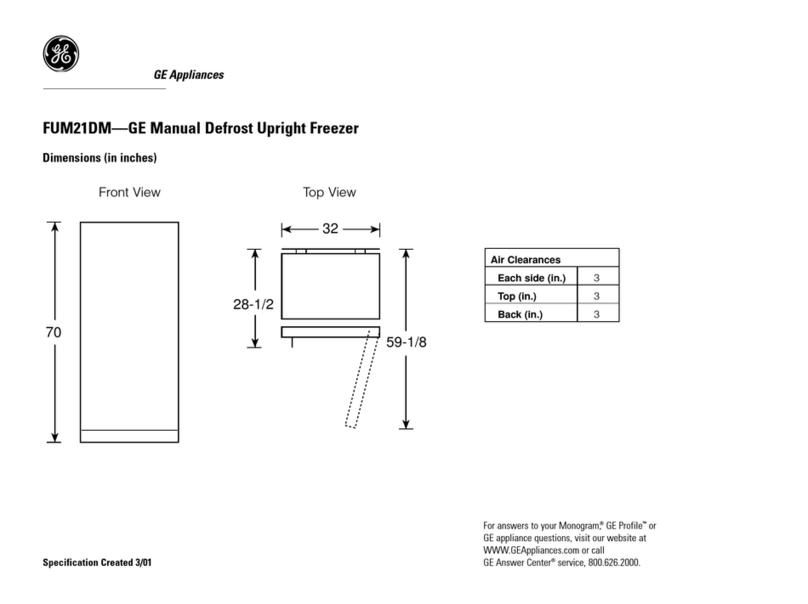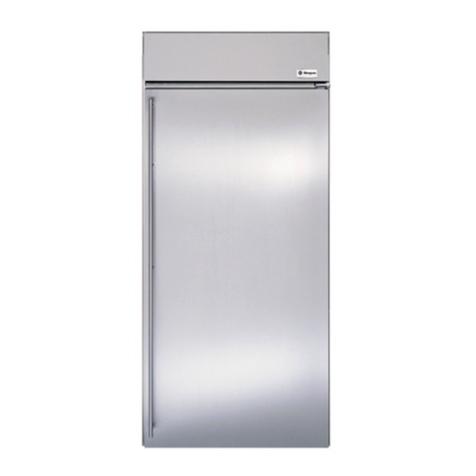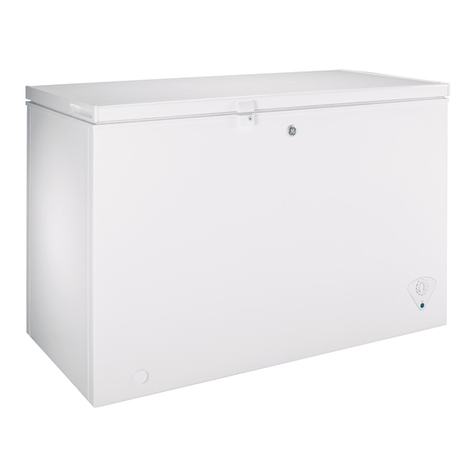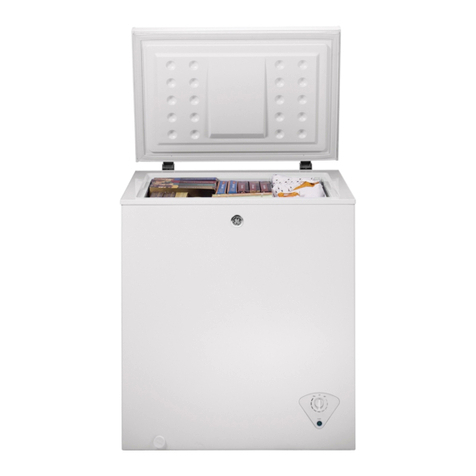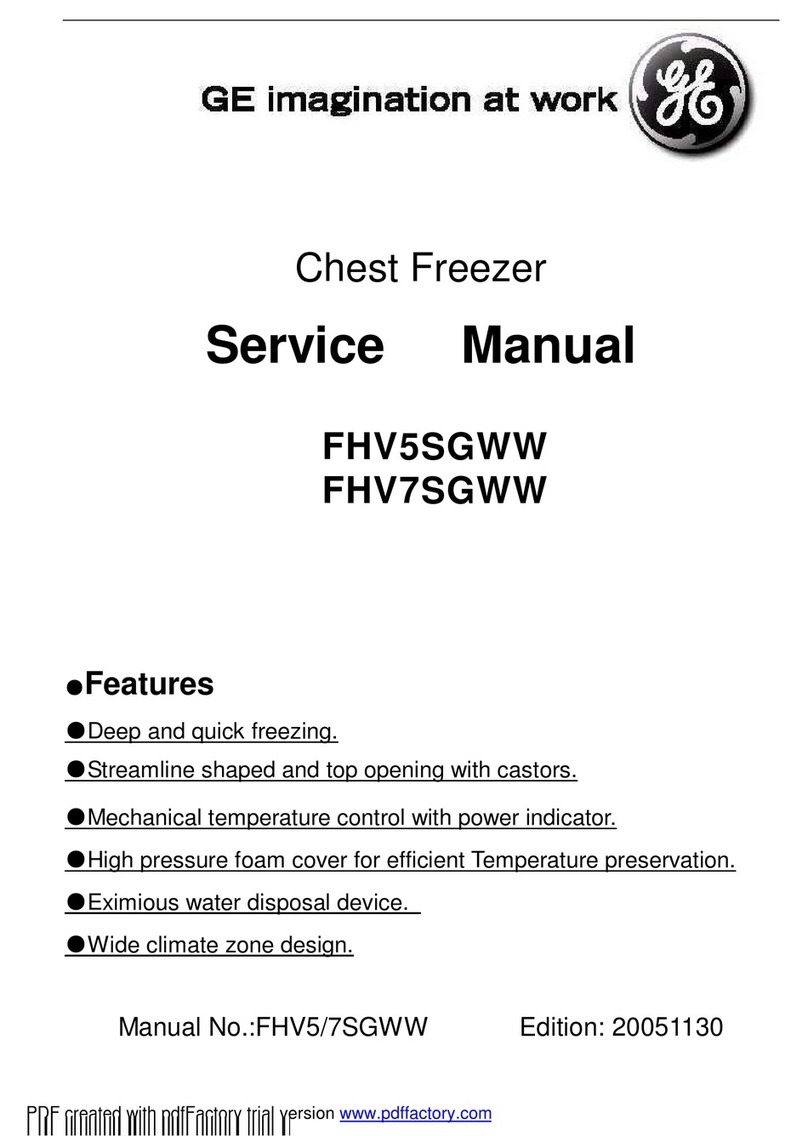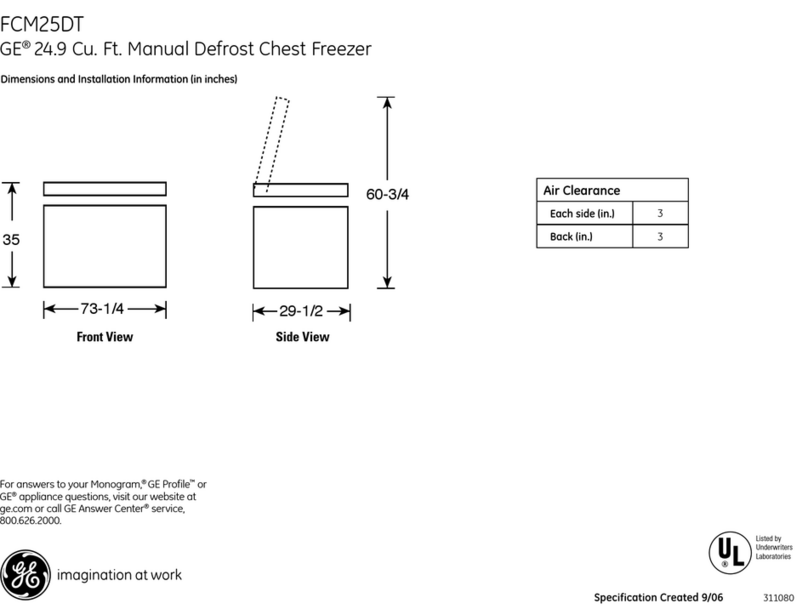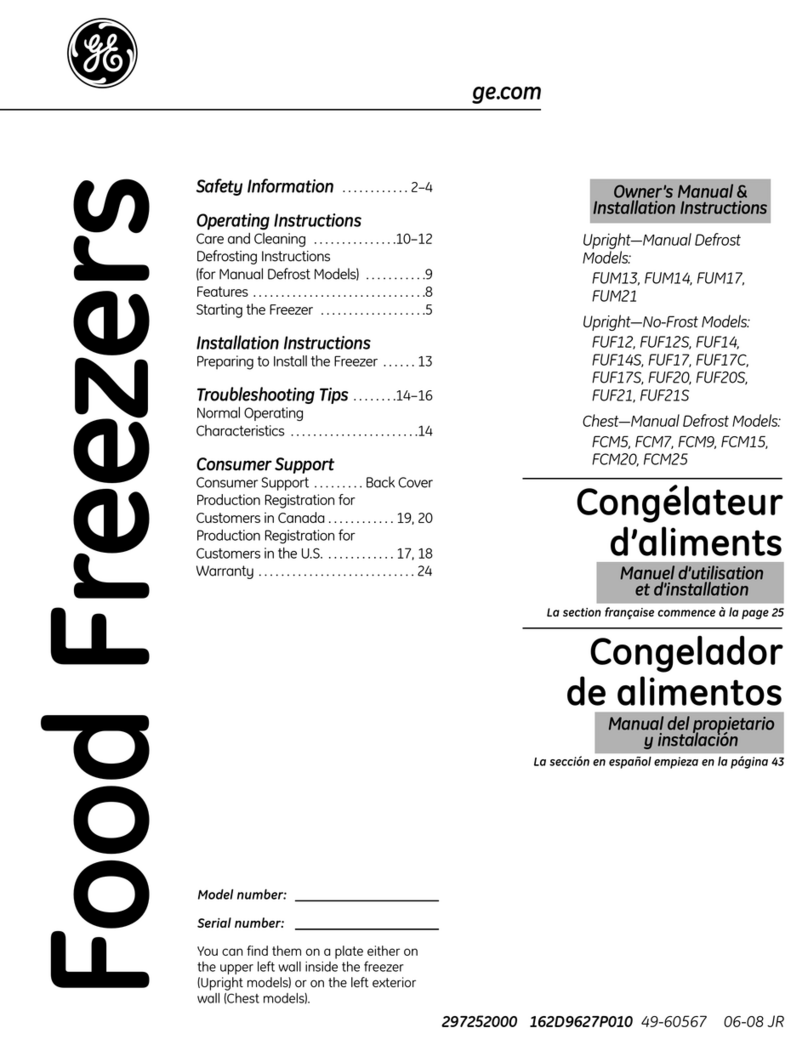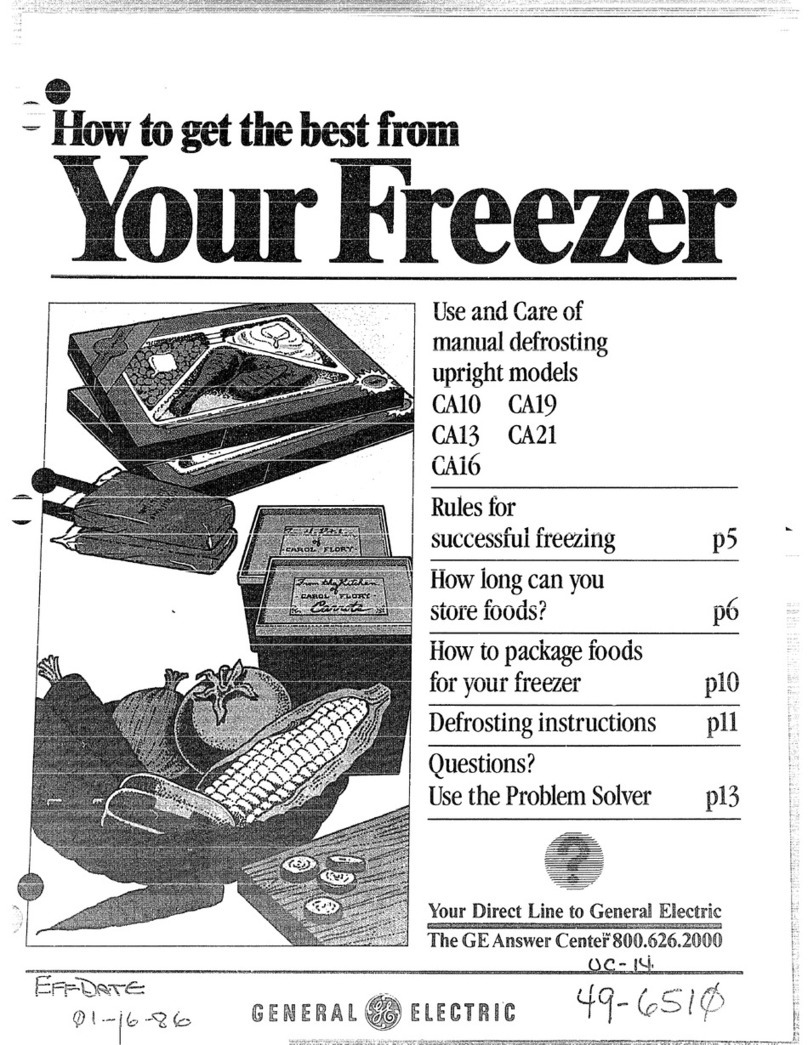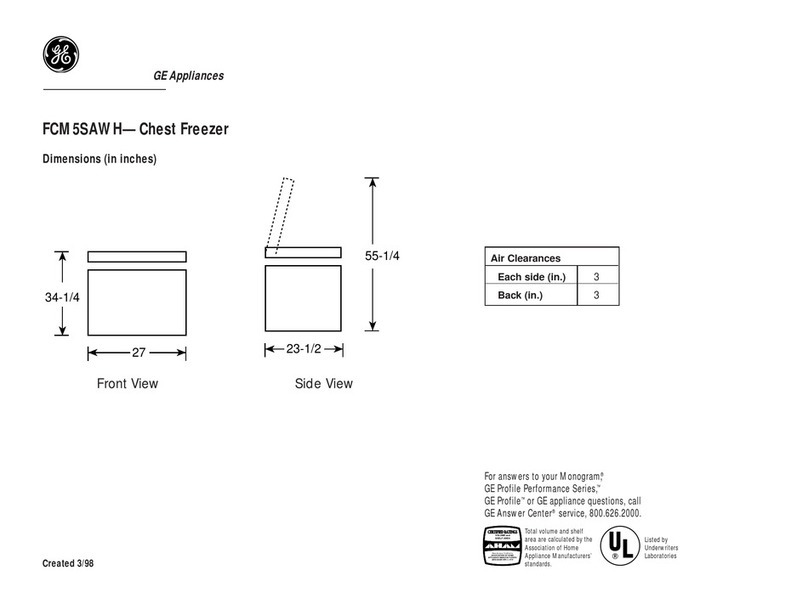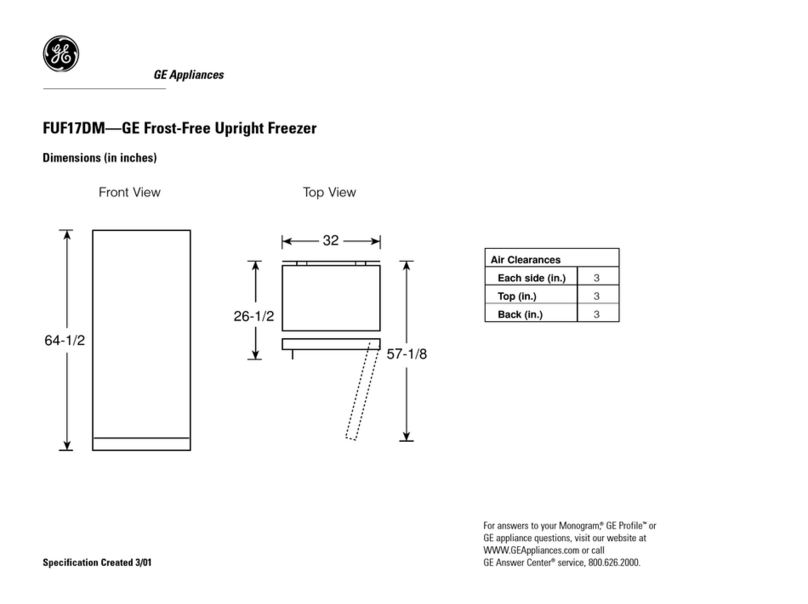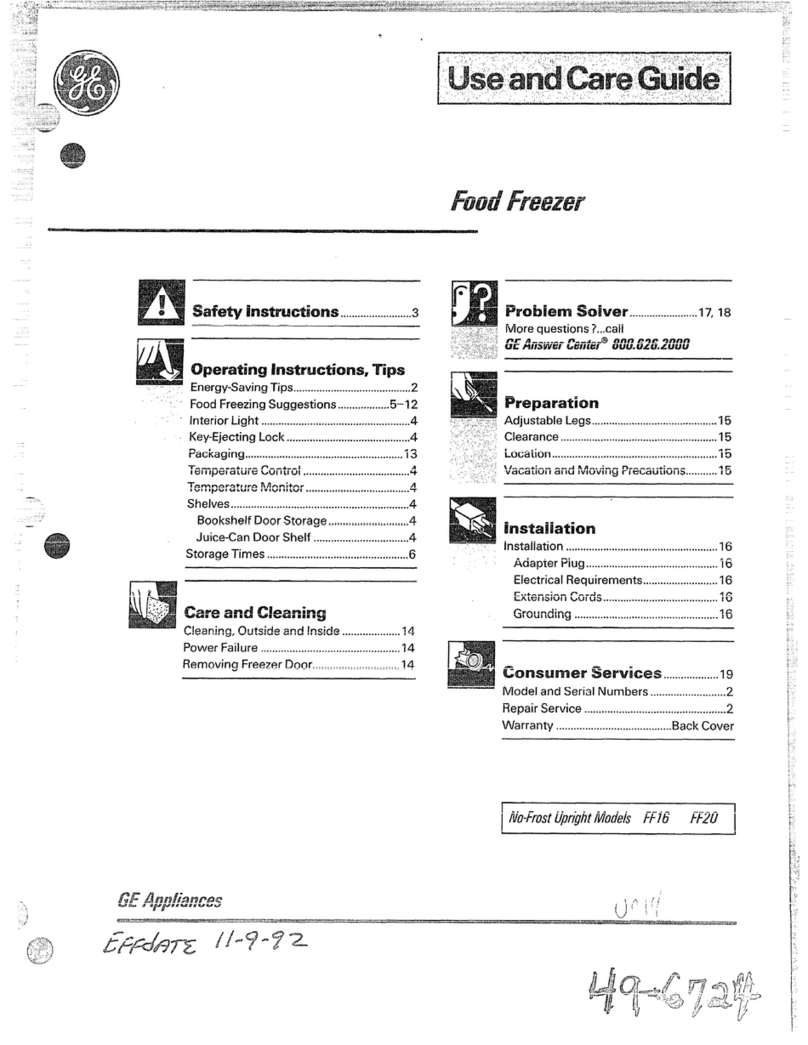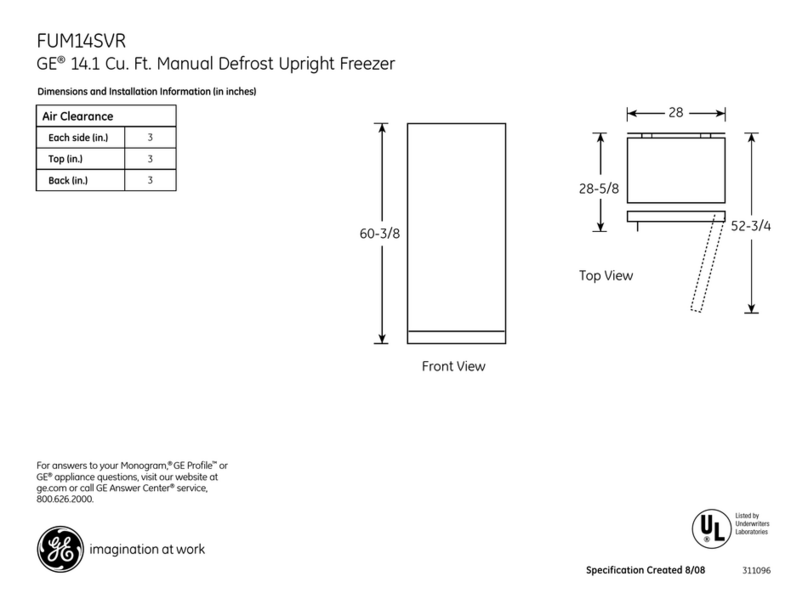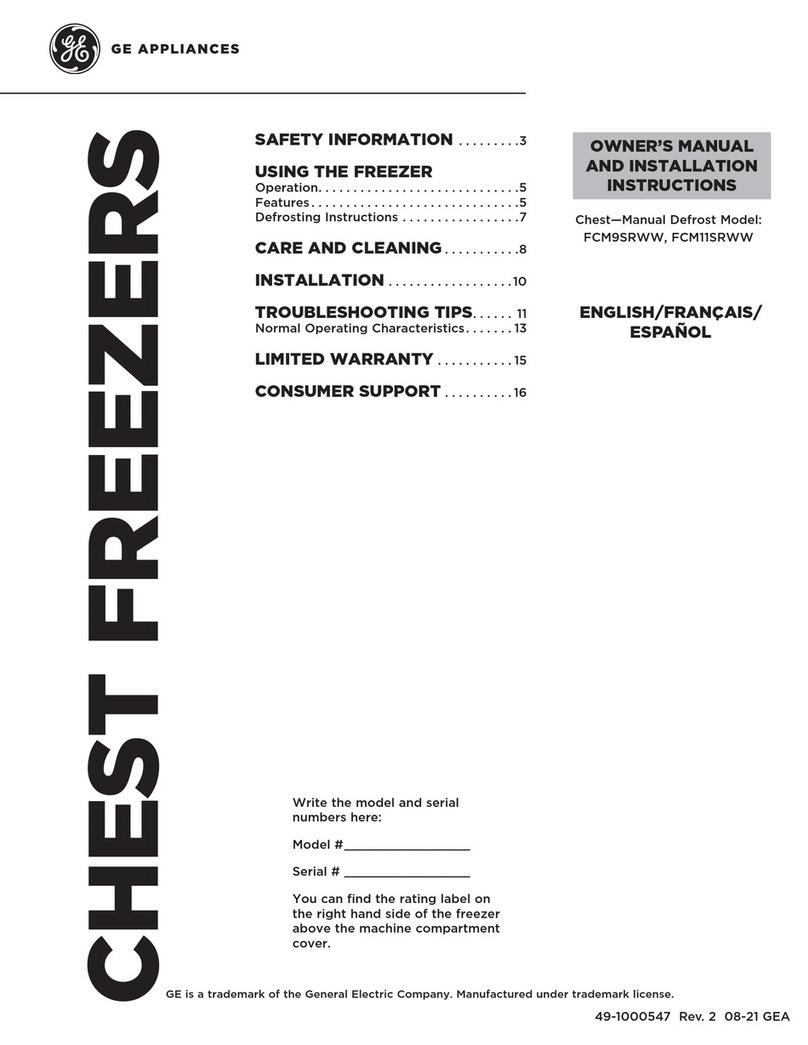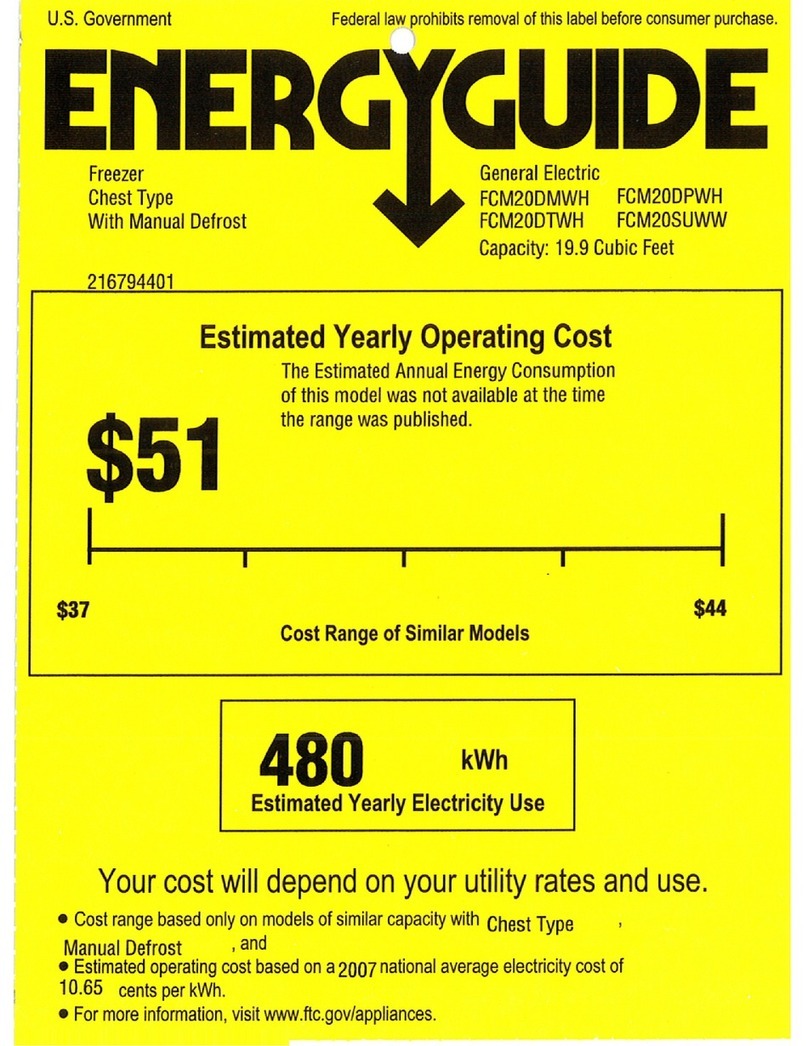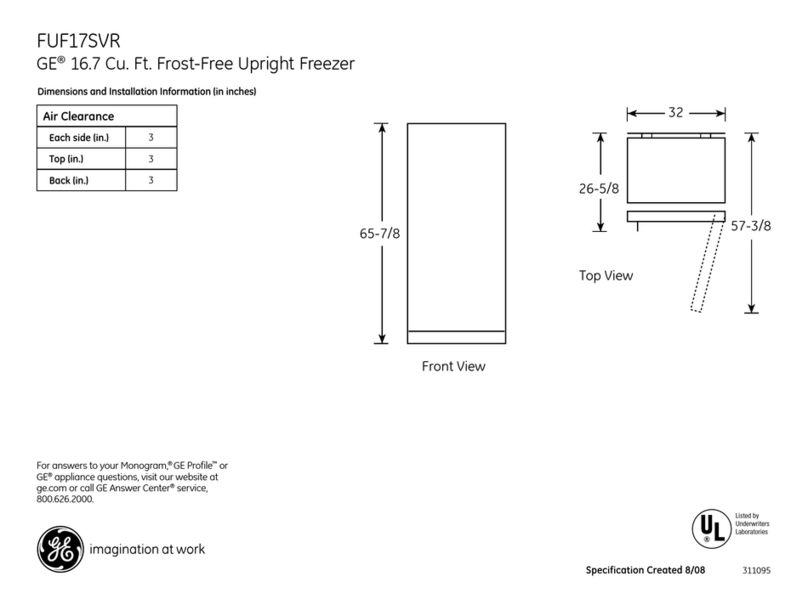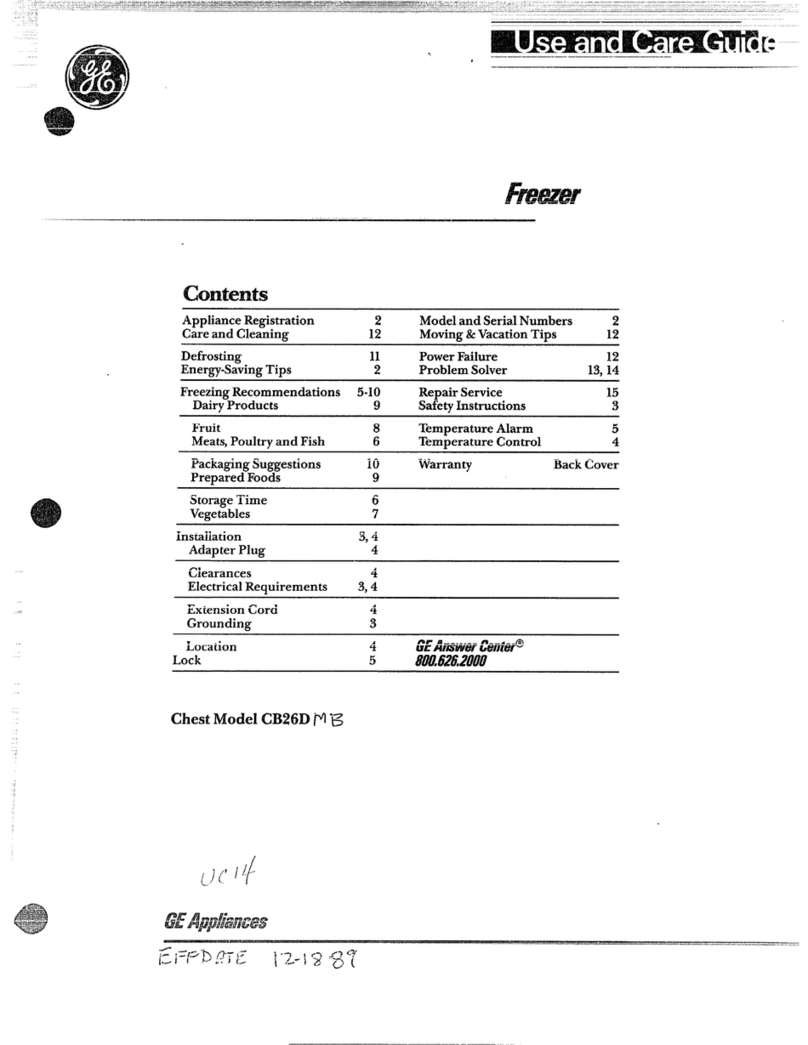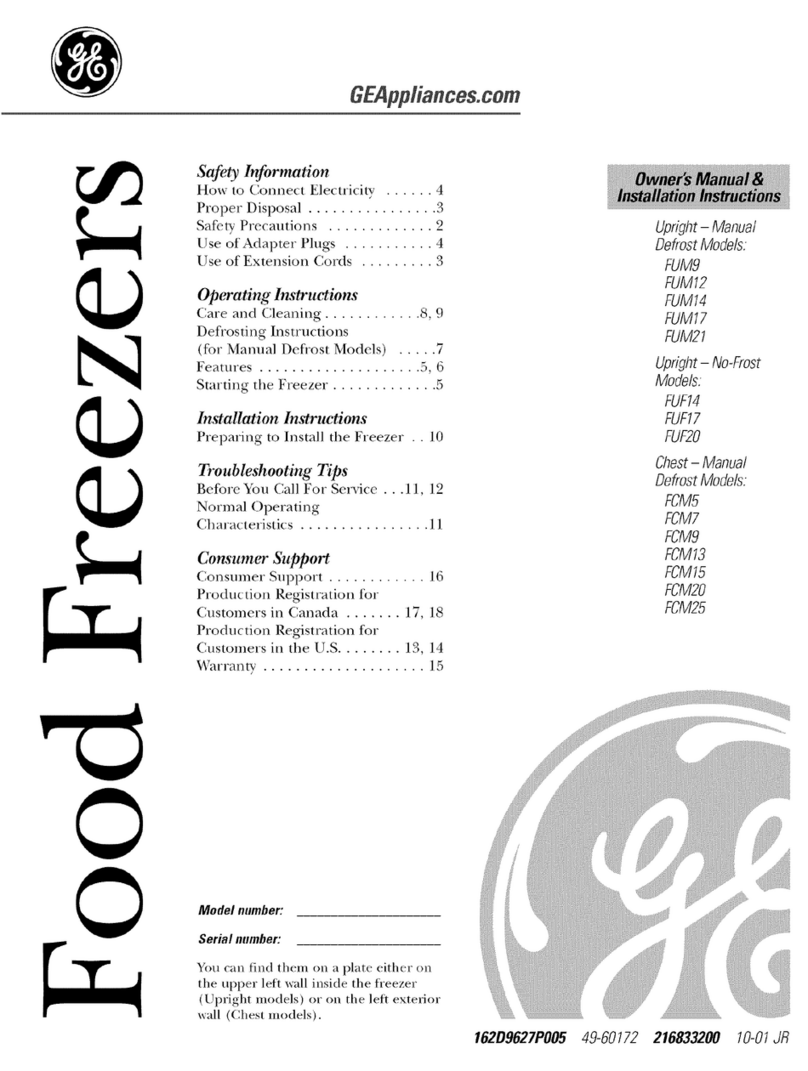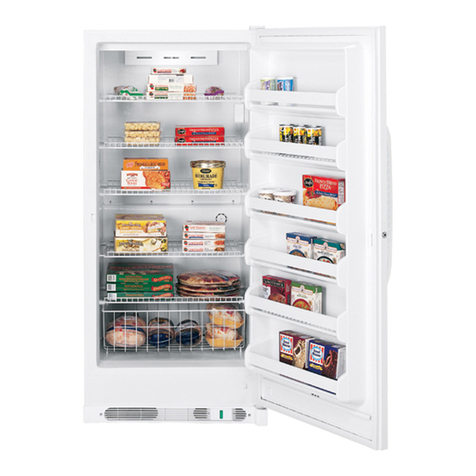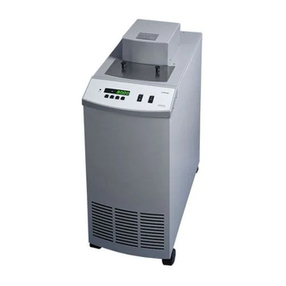Fm~ing
Daiy
Pmduc&
Butter and Margarine
Overwrap
original carton in
moisture/vapor-proof material or
enclose in moisture/vapor-proof
containers.
Cheese
Freeze cheese in 1/2-to l-pound
pieces. Wrap in moisture/vapor-
proof material.
Uncreamed
cottage
and Camembert cheese may be
kept in the freezer though there
may be some water separation on
thawing. Cream and processed
cheese do not freeze well as
freezing affects their smooth texture.
Cream
Ordinary household cream for table
use does not freeze well, but will be
suitable for cooking. Pasteurized
heavy cream containing not less
than 40 percent butterfat maybe
frozen. Heavy cream which has
been whipped freezes well, too.
Drop mounds of whipped cream
on baking sheets. Freeze. Transfer
frozen mounds quickly to a rigid
container and seal, separating
layers with paper.
Ice Cream
Commercial ice creams can be
stored in the freezer in their original
carton. Home-made ice cream
should be packed in
moistureNapor-
proof cartons.
Fine-quality ice cream, with high
cream content, will normally require
slightly lower temperatures than
“airy” already-packaged brands
with low cream content. It will be
necessa~ to experiment to determine
the location in the freezer and the
temperature control setting to keep
your favorite ice cream at the right
serving temperature.
Bread and Rolls
Bake, cool, wrap and freeze. To
serve: thaw in wrappings at room
temperature. Or, heat or toast
frozen. If desired, wrap in foil and
warm for 15 minutes in 250° to
300°F oven. Note: most com-
mercially baked products should
be rewrapped in
moisture/vapor-
proof material before freezing.
Biscuits
May be frozen baked or unbaked.
To serve baked biscuits: defrost in
wrappings at room temperature for
one hour. Reheat for 5 minutes in
425°F oven. Or place frozen
biscuits in
375°F
oven for 15
minutes. Unbaked biscuits should
be thawed, then baked as usual.
Cake
Bake and cool. If frosted, freeze
before wrapping to avoid sticking.
To serve: unwrap frosted cakes;
thaw at room temperature. Thaw
unfrosted
cakes in wrappings at
room temperature. Allow about two
hours to thaw a large cake.
Icings made with egg white do not
freeze satisfactorily. Those made
with powdered sugar, butter, fudge
or whipped cream freeze well.
Cookies
If baked before freezing, cool and
package them carefully in moisture/
vapor-proof material. They will
thaw in about 15 minutes at room
temperature in wrappings. Refriger-
ator cookie dough may be wrapped
and frozen in bars. Slice as needed,
without defrosting, and bake.
Pies
Most pies except cream, custard or
meringue-topped pies freeze well,
baked or unbaked. Baked pies
store for a longer time. Omit steam
vents from pies to be frozen unbaked.
To serve unbaked pies: Cut steam
vents in top crust and place frozen
pie in oven at usual temperature.
Increase baking time 10 to 15
minutes. Thaw frozen baked pies,
wrapped, for 1 to
11/2
hours at room
temperature. To serve warm,
unwrap without thawing and heat
in 300°F oven for 30 to 40 minutes.
Quick Breads and Muffins
Bake, cool and wrap at once. For
serving, thaw, unwrapped, at room
temperature or warm, unwrapped,
in 300°F oven.
Main Dishes
Such foods as chili, spaghetti
sauce, casseroles, etc., are
prepared in the same manner as
for immediate serving with the
exception of seasoning. During
9
Eggs
Use only fresh eggs for freezing.
Chill before freezing. Whole eggs
may be frozen or the whites and
yolks frozen separately as follows:
Whole
Eggs—Mix yolks and
whites thoroughly with a fork.
Do
not
beat
in
air
Add 1 teaspoon salt
to each 2 cups of eggs.
Egg Whites—Separate and freeze
in recipe-sized amounts.
Egg
Yolks—Separate and add 1
teaspoon of salt or
1
tablespoon of
corn syrup or sugar per cupful of
yolks. Blend with fork.
Pack eggs
infreezer
carton
allowing l/2-inch head space
(n/2-inch for glass containers).
Thaw eggs in unopened container in
refrigerator or at room temperature.
storage, onion flavor becomes less
noticeable and celery flavor more
pronounced. Spices also lose their
strength during long periods of
storage. Omit potatoes from stews
and soups as they become mushy.
Cool main dishes after cooking;
package in moisture/vapor-proof
material and freeze. To serve these
foods, thaw gradually over low heat
adding a little liquid if necessary to
prevent foods from sticking to the
pan. Or heat in a 300°F oven for
about 1 hour or until heated
thoroughly.
Sandwich Tips
All varieties of bread can be frozen.
Spread softened butter on each
slice, then spread filling. It is not
advisable to use salad dressings
for spreading as they separate and
soak into the bread.
Meat, fish, some cheeses, poultry
and peanut butter are recommended
fillings for freezing. Cooked eggs
become tough when frozen. Other
fillings can be moistened with milk,
cream, pickle relish, chili sauce,
catsup, fruit juice, a little
mayonnaise or salad dressing.
Lettuce or other salad greens and
raw vegetables do not freeze well and
should be added just before serving.
Wrap sandwiches in moisturehapor-
proof material and freeze.
